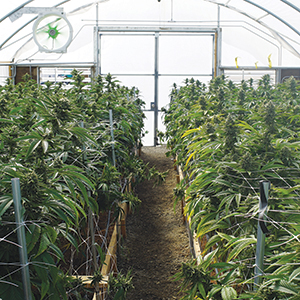Features & Columns
Can Cannabis Treat Type 2
Diabetes, Munchies?
 Tests show some promising results in the cultivation of THVC.
Tests show some promising results in the cultivation of THVC.
My Google alerts recently put me on to something intriguing. The combination of CBD and THCV (tetrahydrocannabivarin) looks to have significant therapeutic potential in the treatment of Type 2 diabetes.
While this was news to me, scientific studies concerning THCV and Type 2 diabetes have been making scientific news for at least three years. What is THCV? Simply put, THCV is what chemists call the propyl variant of THC. To quote a Leafly article, "THCV is similar to THC in molecular structure and psychoactive properties, but it provides a variety of pronounced and altogether different effects." While THCV is psychoactive, it's a shorter, more intense high than THC. THC is a few hours at the amusement park; THCV is an hour on the roller coaster.
As it turns out, THCV has another application: appetite suppression. No munchies! Before we go too far, let's throw a little cold water on THCV and weight loss. The science concerning THCV and weight loss is not well-developed. No one knows how long the effect lasts and how much weight loss can be expected. Even with that caveat, the possibilities are intriguing. The weight-loss industry is worth $60 billion a year, the same as the cannabis industry. What happens when those two industries intersect? Snoop Dog, Jenny Craig and Warren Buffet meet at a party. Venture capital apoplexy. World domination.
It turns out that there aren't any high THCV/CBD strains out there. Even THCV by itself is hard to find in any significant concentration. The strains Jack the Ripper and Durban Poison have approximately 2 percent THCV. Doug's Varin has closer to 7 percent THCV, but it has a reputation as a scrawny plant. The strain Willie Nelson has some THCV, but none of the people in my circles know anything about it.
There is a micro-grow (10 plants) in Sonoma County with a strain code named Elizabeth Taylor with 6.7 percent THCV and 12 percent THC. It's a robust plant with the highest terpene (essential oils that give cannabis strains their unique aromatics) profile measured around here. For Elizabeth Taylor to be useful, the THCV may need to be isolated from the THC and the terpenes.
The big-market potential from secondary cannabinoids, thin science and the lack of THCV/CBD rich genetics is (IMO) the perfect opportunity for any forward-thinking entrepreneur. Whether it's THCV or something else (CBDV?), our cannabis future, both economic and cultural, will be shaped, not by what we know, but by what we will be able to learn.
Michael Hayes works for CBD Guild. Contact at [email protected].


